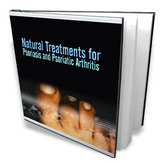
Description
When people are diagnosed with psoriasis, it changes them physically because of the lesions that appear on the skin. But, just as importantly, it may influence how they work, play, view themselves and interact with others.
Psoriasis is an autoimmune disease affecting the skin and joints. When it affects the skin it commonly appears as red scaly elevated patches called plaques. Psoriasis plaques frequently occur on the elbows and knees, but can affect any area of skin including the scalp and genital area. Psoriasis can vary in severity, from minor localized patches to extensive or even complete skin coverage. Fingernails and toenails are often affected. This is called psoriatic nail dystrophy.
Psoriasis can also cause inflammation of the joints. This is known as psoriatic arthritis. Psoriatic arthritis can affect any joint but is most common in the joints of the fingers and toes. This can result in a sausage-shaped swelling of the fingers and toes known as dactylitis. Psoriatic arthritis can also affect the hips, knees and spine. This is known as spondylitis.
Psoriasis affects both sexes equally, occurs at all ages and is prevalent in 2-3% of the Western populations.
Several factors are thought to aggravate psoriasis. These include stress and excessive alcohol consumption. Individuals with psoriasis may also suffer from depression and loss of self-esteem. As such, quality of life is an important factor in evaluating the severity of the disease. There are many treatments available but because of its chronic recurrent nature psoriasis is a challenge to treat.
Here’s what you will learn about in the “Natural Treatments for Psoriasis and Psoriatic Arthritis” E-Book:
-
The true definition of the conditions known as psoriasis and psoriatic arthritis…
-
The five different types of psoriasis…
-
The likelihood of you having your psoriasis develop into psoriatic arthritis…
-
The classic symptoms of psoriasis vulgaris which is the most common type of the affliction…
-
The symptoms and appearance of guttate psoriasis which appears as red spots…
-
What the streptoccal virus may have to do with the development of psoriasis in your case…
-
The symptoms of erythrodermic psoriasis which cusses severe redness and pain…
-
The likelihood of contracting severe infections when you have certain types of psoriasis…
-
Which type of psoriasis can almost be as painful as a very bad burn…
-
The most common places on the body to find the psoriasis plaques (tough red patches of skin covered with silvery scales)…
-
Why psoriasis sufferers shed their skin…
-
The symptoms of inverse psoriasis which lurks in skin folds…
-
The symptoms of pustular psoriasis which looks like acne…
-
Who is most likely to develop pustlar psoriasis…
-
What type of psoriasis is most likely to cause severe pain…
-
How dermatologists classify psoriasis from being mild, moderate and severe…
-
How the condition of psoriasis is actually related to an overactive immune system…
-
How having a family history of the disease can have a relationship to your case of psoriasis…
-
What your T-cell count can tell you about your psoriasis outbreaks…
-
How psoriasis can affect the quality of your life…
-
How psoriasis can affect your self esteem…
-
How teenagers in particular are affected by the condition…
-
Why psoriasis sufferers have a higher rate of suicide than non sufferers…
